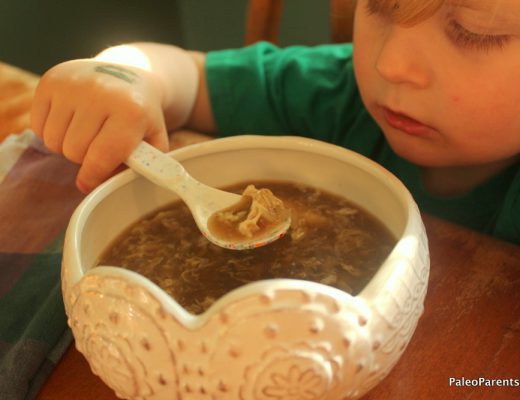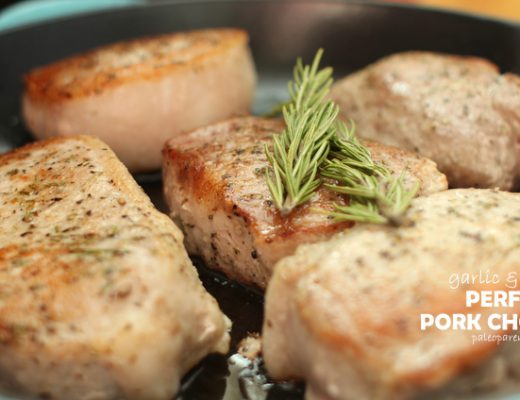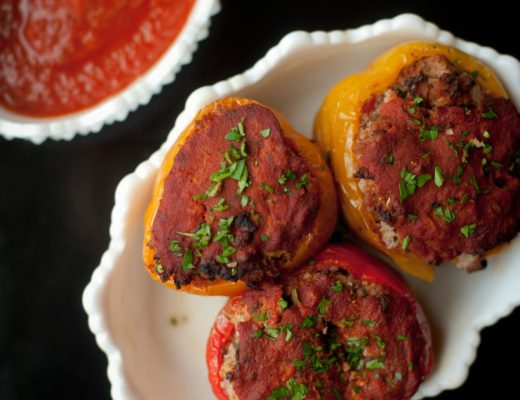We are REALLY excited to share today’s guest blogger because she is someone who is very near and dear to our hearts!
From the second she joined our team, we knew that she was a rare find – someone that we could depend on to help with a wide variety of projects – someone who would add creativity, and fresh ideas to our channels – and someone who genuinely shared our love for good food and great recipes, and for homesteading in healthy ways.
Her blog is a favorite of ours, and after one visit over to her site you will see why. Crystal, our Content Coordinator and the talent behind Whole-Fed Homestead, develops amazing whole-food recipes, shares on the lessons learned from raising her animal clan, and ultimately makes us want to pack up the house and take up residency in an old farm house!
The guest post that she has for us today will make you think about the end of summer very differently. Even those who have tuned out the talk of preserving your farmer’s market hauls, won’t be able to resist these insanely easy steps to storing your delicious summer eats for the long winter ahead!
Ok, we could go on and on about Crystal, so we will turn it over to her – ENJOY!
♥♥♥

Hi, I think we’ve met before! I’m Crystal, a member of the Paleo Parent’s team, but today I am thrilled to be sharing with you a little bit more about me, my homestead, and my love of preserving the summer’s bounty. I hope you’ll see that you don’t need to have a big garden or even a green thumb to think about preserving food. Finding local, incredible-tasting produce, and making it last all year is something anybody, with any skill level can do.
The prospect of squirreling-away nutrient-rich fruits and veggies makes me (probably a little bit too) excited! I’ve always thought I was born in the wrong time period; give me a wood-burning oven and a room full of antique mason jars, please. I grew up gardening with my parents and playing in the woods. My fiancé was a city boy who spent summers on his grandparents’ farm canning peaches, milking cows, and learning how to drive a tractor. We follow a Paleo diet, which comes pretty naturally on the homestead because we hunt, gather, grow and raise as much of our own food as we can. On our blog, Whole-Fed Homestead, we share the ups and downs of life on the homestead and our favorite real-food recipes – so stop on by anytime!

Preserving: Why Bother?
Not that long ago, preserving was a way of life. If you didn’t preserve, you wouldn’t eat- plain and simple. Fortunately today that’s not the case, but preserving is a great way to connect us to our past, to nature, and to our food… and who couldn’t use more of that? Preserving is a wonderful learning opportunity for kids that can help make them excited about real food. Plus, you get to control the ingredients, it can save money, reduce your carbon footprint, and it’s a lot of fun!
I’m sharing a few of my preserving favorites – the simplest, most rewarding, biggest bang for your effort, fruits and veggies you can preserve at home!
Freezing
Possibly the easiest method of preservation, and especially great for beginners! Just be sure to use “freezer” bags, not “storage” bags so that your produce doesn’t get freezer burned.
Berries
A great opportunity to pick your own and see your food all the way from field to pantry! Stacy and Matt will attest to the great fun their family has picking strawberries every year. Picking a trunk-load of fresh berries and preserving them couldn’t be easier! We wash them, sort through to pick out any debris, let them dry off a little, and then pack them into bags and freeze. It’s really that simple.

Some people prefer to freeze berries on sheet pans before putting them into bags, so that they are loose in the bag, and taking out only a few at a time is no trouble. This is too time-consuming for me, and I find that a good rap on the counter is all that is needed to loosen gently stuck-together berries.
Kale
Kale freezes wonderfully! Wash thoroughly and use your hands to tear the leaves from the center rib. Neatness doesn’t matter because next you’ll chop it or tear it into bite-sized pieces anyways. I steam small batches for about 5 minutes and then pack them into silicon muffin pans (ice cube trays work too) and freeze.
I pop out the kale pucks, store them in freezer bags and use them until next garden season. They go well in just about any soup or stew, thawed into your favorite tomato sauce, used for kale artichoke dip, or even just thawed and sautéd in ghee with garlic for a simple kale side dish.
Not only is it full of nutrients, but kale is easy to grow! It is a great candidate for a porch pot or even added to landscaping. You can keep eating from it all summer and fall, because as you pick the outer leaves more grow from the center. Of course you can always find great fresh kale at the Farmer’s Markets too.
Zucchini
Have you heard the joke about gardeners leaving bags of zucchini in unsuspecting unlocked cars and on doorsteps? I’m not sure if that really happens, but it does speak to the volumes of zucchini available in summer! Freezing shredded zucchini for zucchini breads throughout the year is a must for us. I use a box grater to shred it (don’t peel it!) and put about four cups into each freezer bag. That’s it, quick and simple.
Dehydrating
I use an Excalibur Dehydrator (as do the Paleo Parents!) and can’t recommend it enough. There is also a smaller version with half as many trays if you are looking to save a little money upfront, but ours pays for itself over and over again!
Strawberries
Dehydrating is my favorite way to preserve strawberries because the end product is insanely delicious! We love putting them in trail mixes, lunch boxes, and for long car trips and travel.
Cut the tops off of washed strawberries, and then cut each berry into 3-5 slices, place on the trays, and dehydrate until completely dry. You’ll know they are done when there is no wet-looking spots. They store wonderfully and should last all year. The ultimate healthy fruit snack!

Blueberries
Blueberries are another great fruit to dehydrate, and I have complete instructions on dehydrating blueberries here, along with an entire guide to preserving them in other ways also.
Apples
Apples dried with cinnamon on them are an awesome treat! They also make a great gift- in fact, most of our friends and family know to expect dried apples from us during the holidays.
For chewier dried apples, cut into slices (similar to if you were cutting them up to eat) and for crispier apple chips, use a mandolin to slice them thinly. Place apples on the trays, sprinkle with cinnamon if desired, and dehydrate until dry. I leave the skins on, but you can remove them if you’d like.
Fermenting
I hate to admit it, but I’m not a fermenting-fanatic. So trust me when I say that there are at least a couple garden veggies that are incredibly simple and worthwhile to ferment! With no special equipment needed.
Cabbage
Making your own sauerkraut is a simple endeavor, and these directions from Stupid Easy Paleo are easy to follow and straightforward.
Cucumbers
Did you know that most midwestern farmer’s skip right over the name “cucumber” and just call them “pickles.” That’s probably because as far as they’re concerned, its the only thing you do with a cucumber. Making fermented pickles is about as cheap and easy as it gets (and buying them in the store is expensive!).

Wash the freshest cucumbers you can find and cut about 1/4″ off of the blossom end (the end opposite the stem end). If they are small, leave them whole, otherwise cut them into strips, thin slices, or even chunks. I use one head of fresh dill and one peeled garlic clove for each pound or two of cucumbers. Layer the dill and garlic with the cucumbers in your vessel- glass jars, crocks, food-safe buckets… whatever you have. Then pour over the brine (6 Tbs Kosher salt fully dissolved into 8 cups cool water – this is enough for about 4 pounds of cukes). Place a plate or bowl directly on the cukes so that they stay submerged in the liquid. Cover loosely, put it in a corner and wait a few weeks. In no time you’ll have probiotic-rich, gut-healing, sour garlic dill pickles.
***
Whether you grow it fresh, get it from the Farmer’s Market, or happen upon someone leaving it in your car – preserving the local harvest is very rewarding!
I love this quote by Joel Salatin: “The first supermarket supposedly appeared on the American landscape in 1946. That is not very long ago. Until then, where was all the food? Dear folks, the food was in homes, gardens, local fields, and forests. It was near kitchens, near tables, near bedsides. It was in the pantry, the cellar, the backyard.”
Gain a closer relationship to your food by learning some basic preservation techniques, and when you’re eating home-dried strawberries and summer-fresh zucchini bread, you’ll be glad you did!




